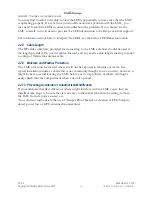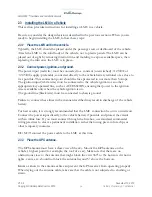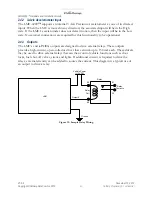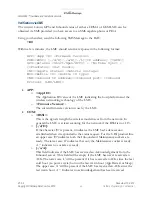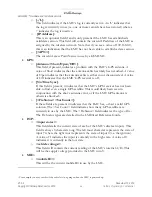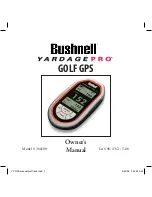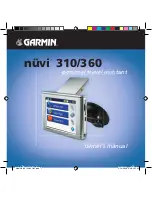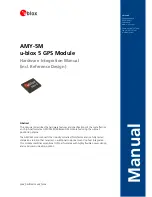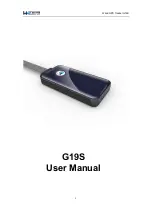
LMU-4200™ Hardware and Installation Guide
V1.0.9
November 13, 2010
Copyright ©CalAmp DataCom Inc 2010
- 15 -
CalAmp Proprietary & Confidential
You may find it useful to be able to view the LEDs periodically to make sure that the LMU
is operating properly. If at any time you should encounter a problem with the LMU, you
may need to read the LEDs in order to troubleshoot the problem. If you cannot fix the
LMU yourself, you will need to provide the LED information to CalAmp customer support.
For information about how to interpret the LEDs, see the Status LED Behavior section.
2.2.8
Cable Length
The RF cables which are provided for connecting to the LMU antennas should be used at
the length provided. Do not cut cables. Instead, coil any excess cable length, making sure not
to crimp or flatten the antenna cable.
2.2.9
Moisture and Weather Protection
The LMU unit must be located where it will not be exposed to moisture or water. In a
typical installation inside a vehicle this is not commonly thought to be a concern; however, it
might be best to avoid locating the LMU below a car’s cup holders, or where rain might
easily splash into the compartment when a door is opened.
2.2.10
Preventing Accidental or Unauthorized Modification
If you anticipate that fleet drivers or others might interfere with the LMUs once they are
installed, take steps to be sure that it is not easy to disconnect the antenna wiring, remove
the LMU from its power source, etc.
Two common methods are the use of Tamper Proof Sealant or creation of PEG Script to
detect power loss or GPS antenna disconnections.















